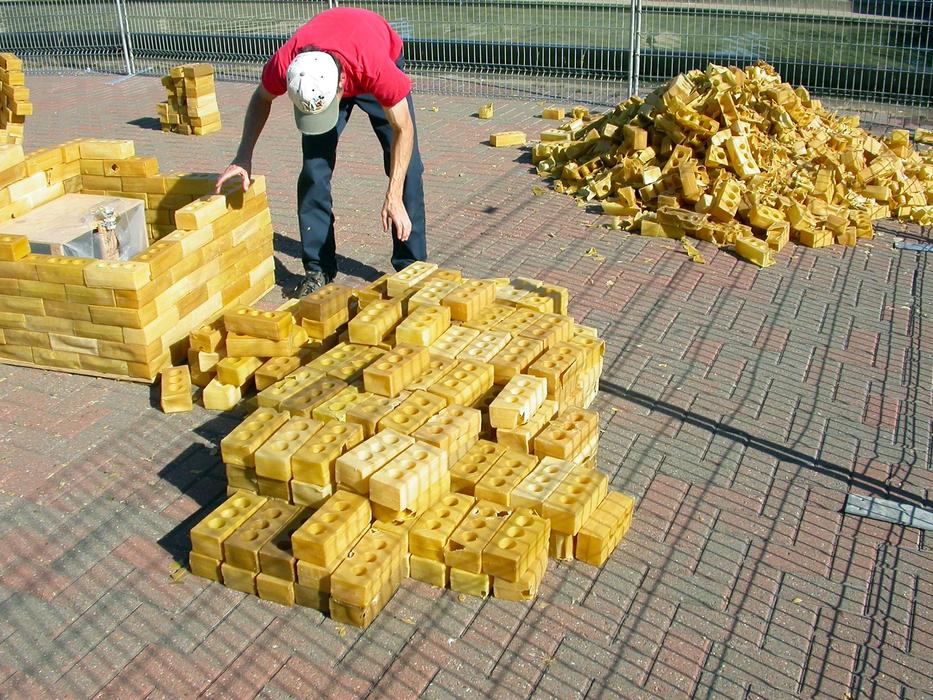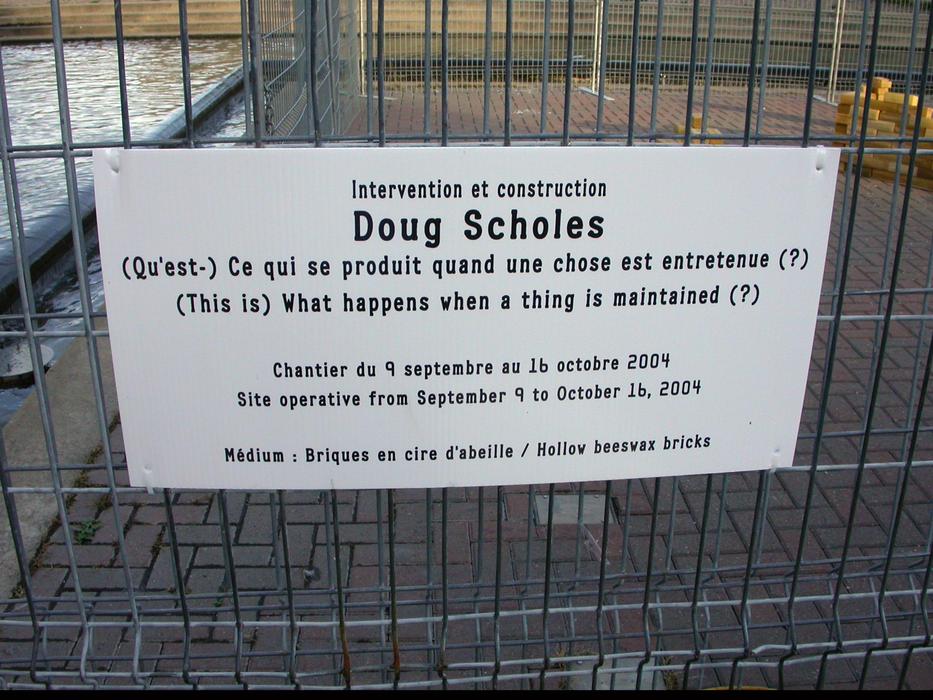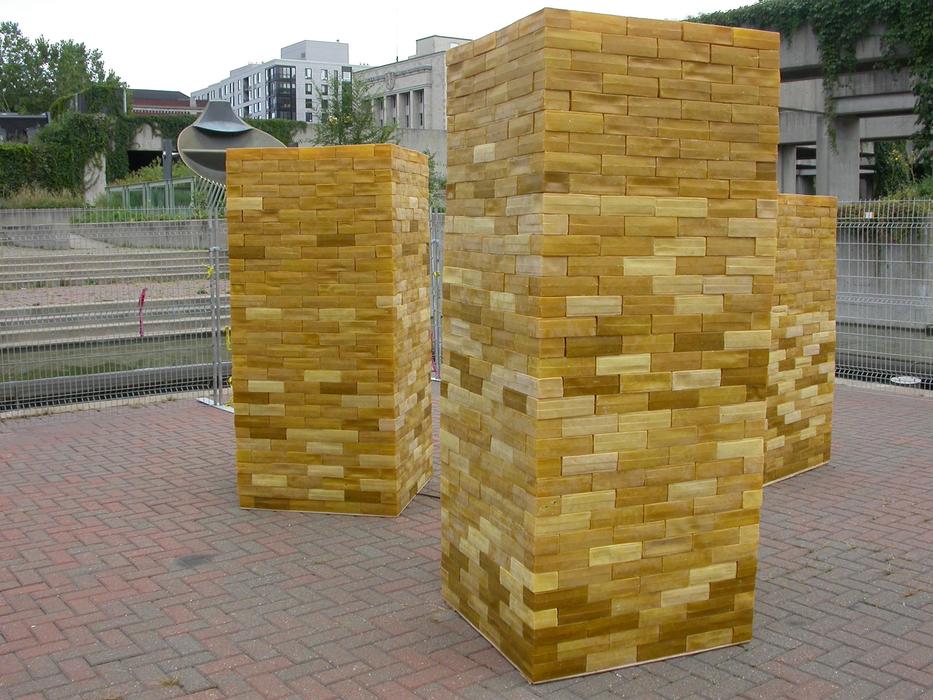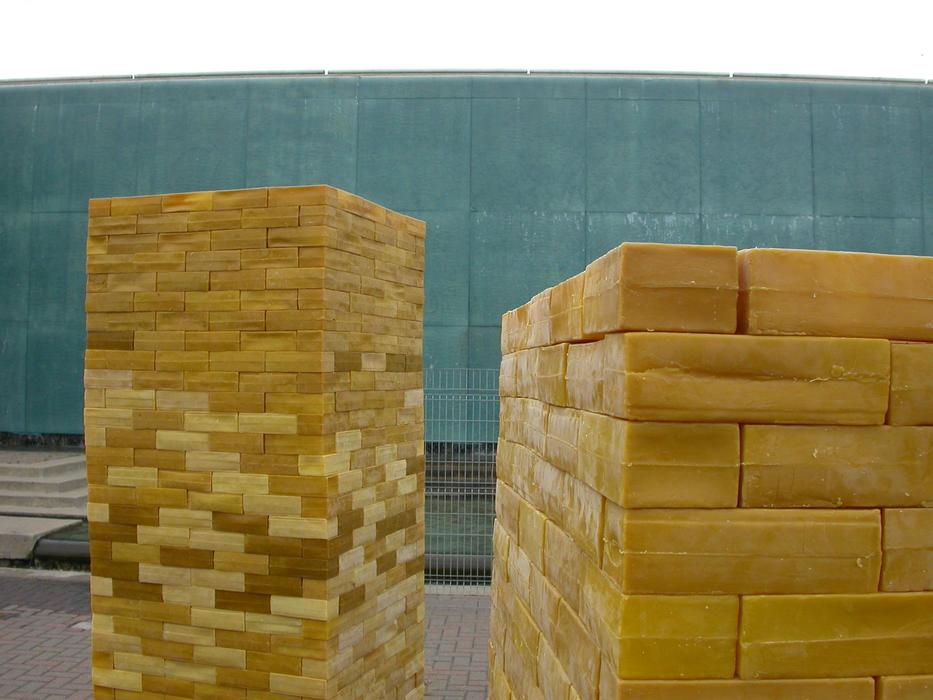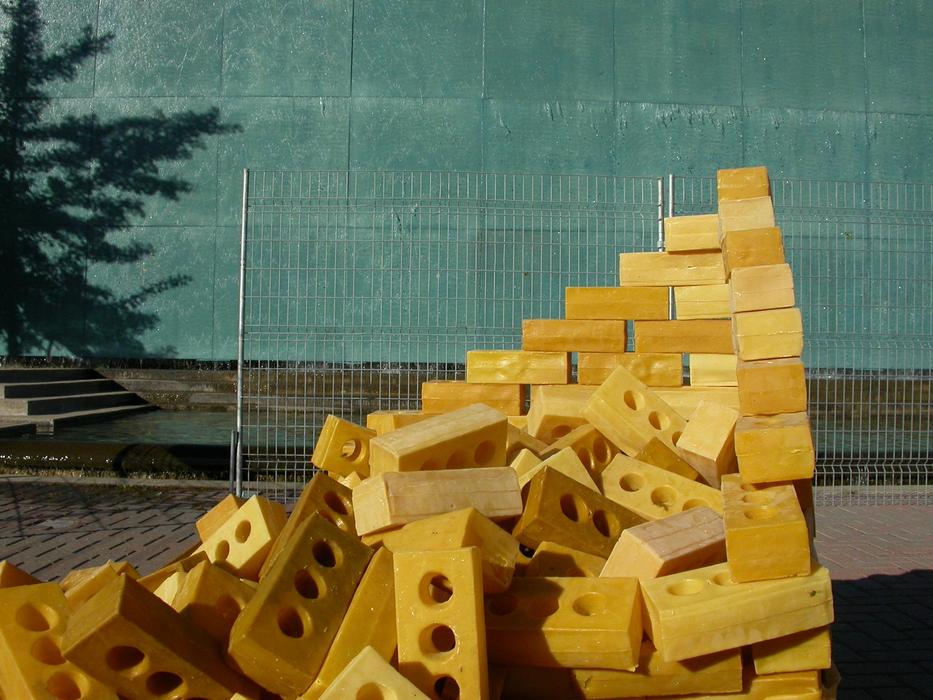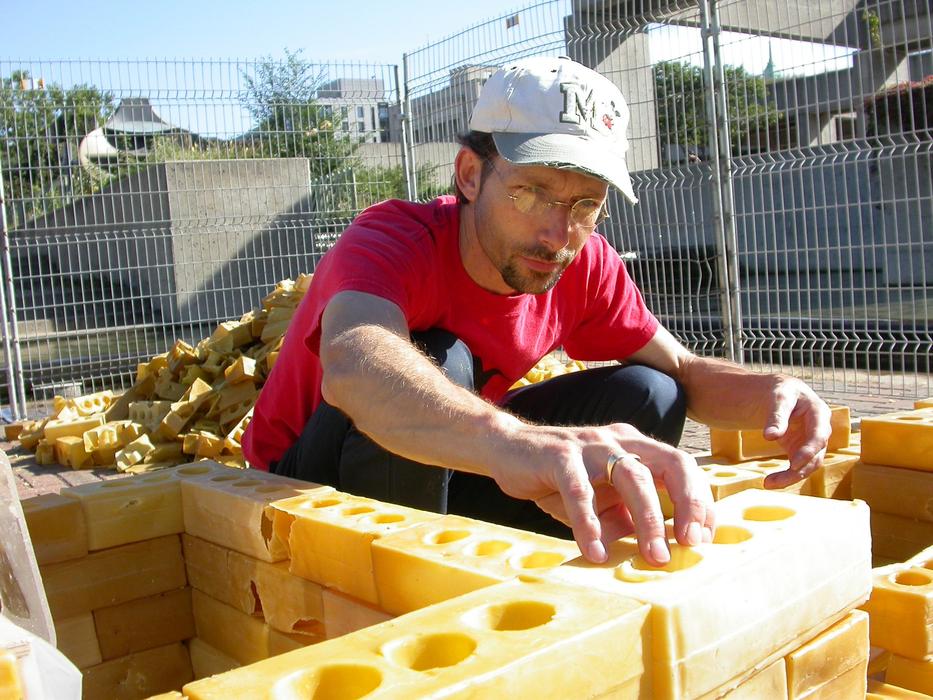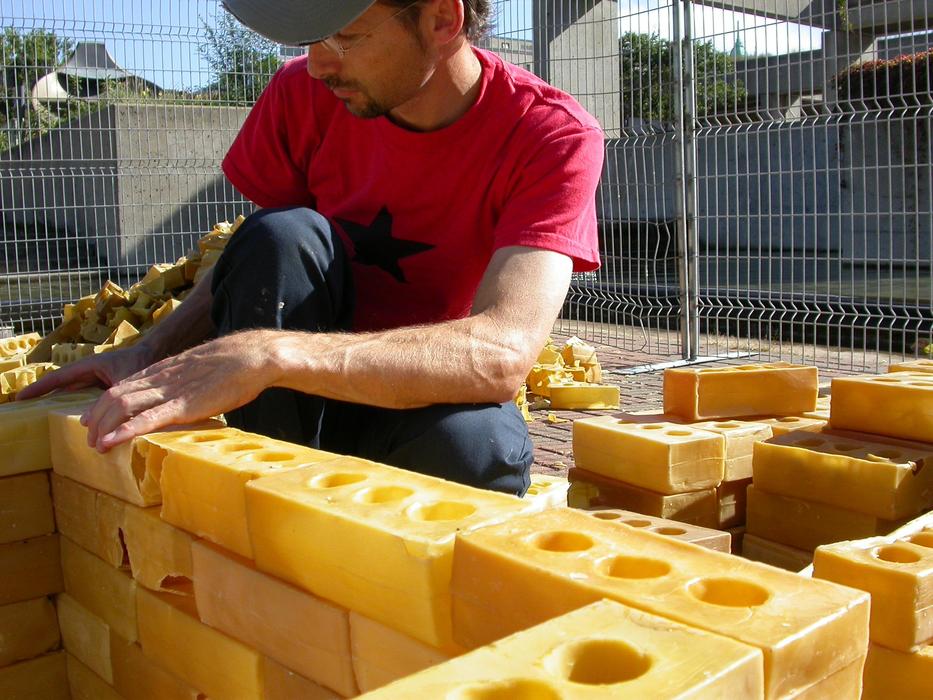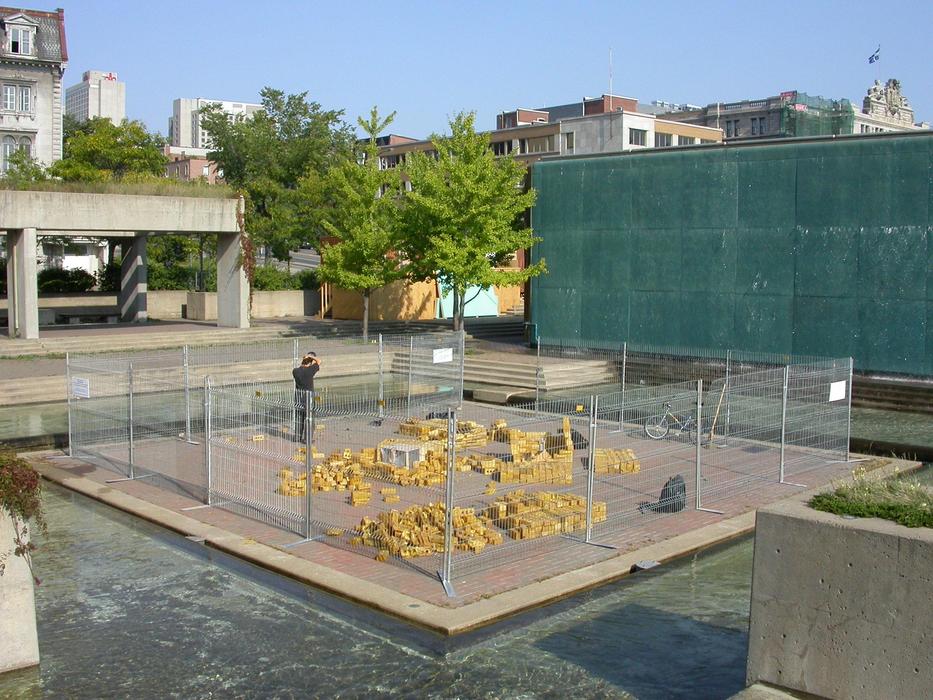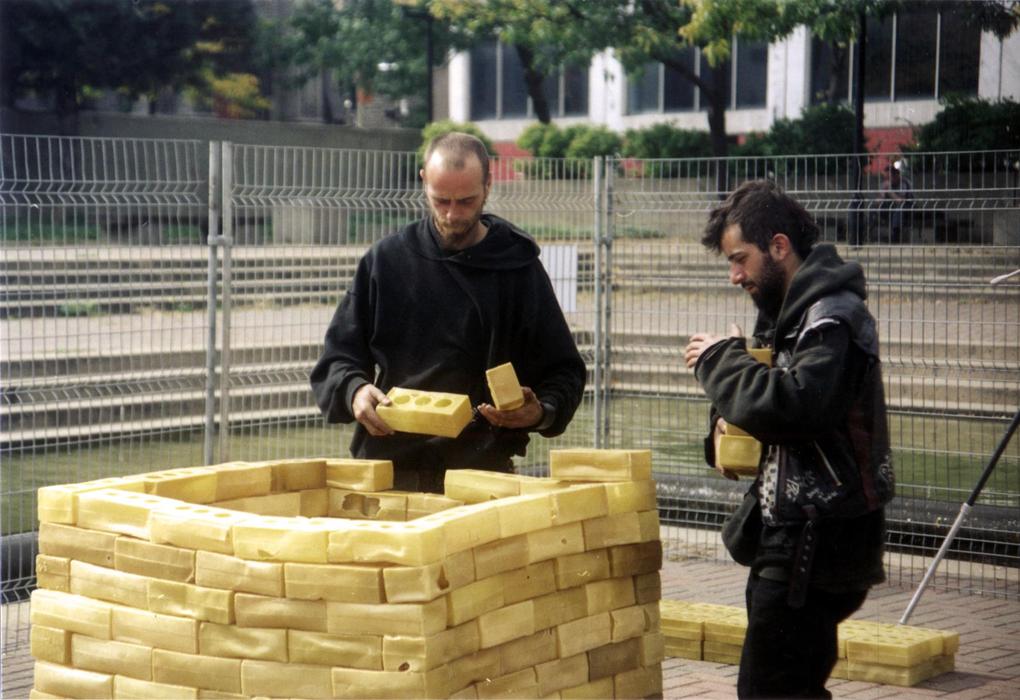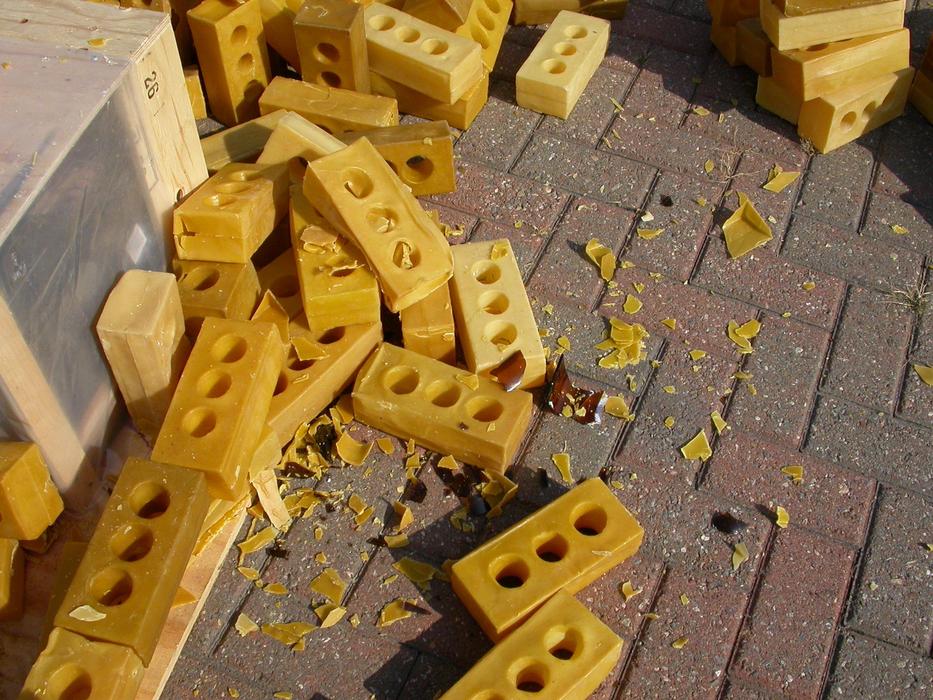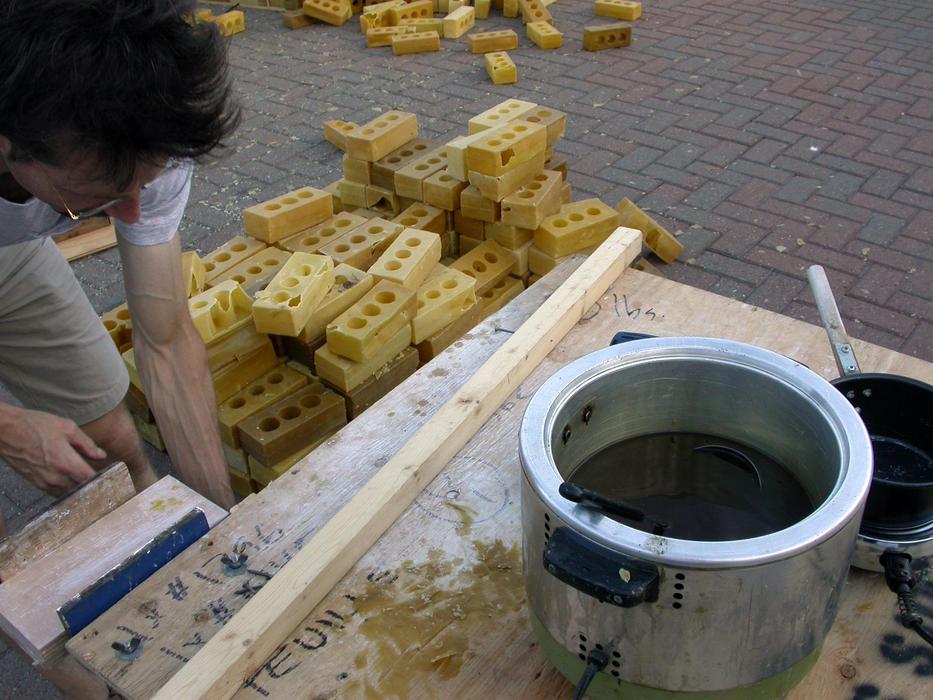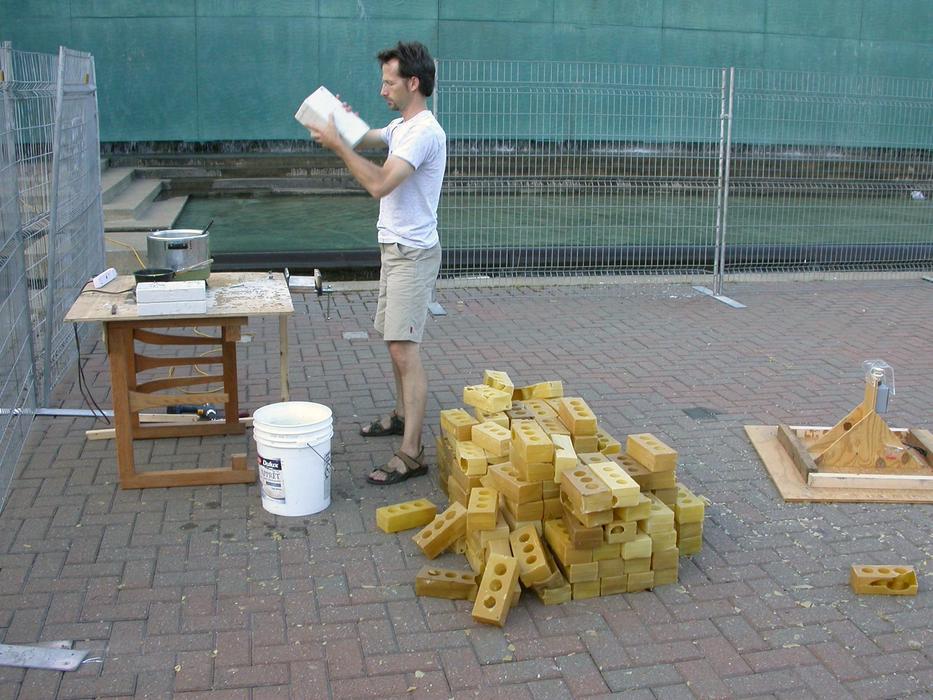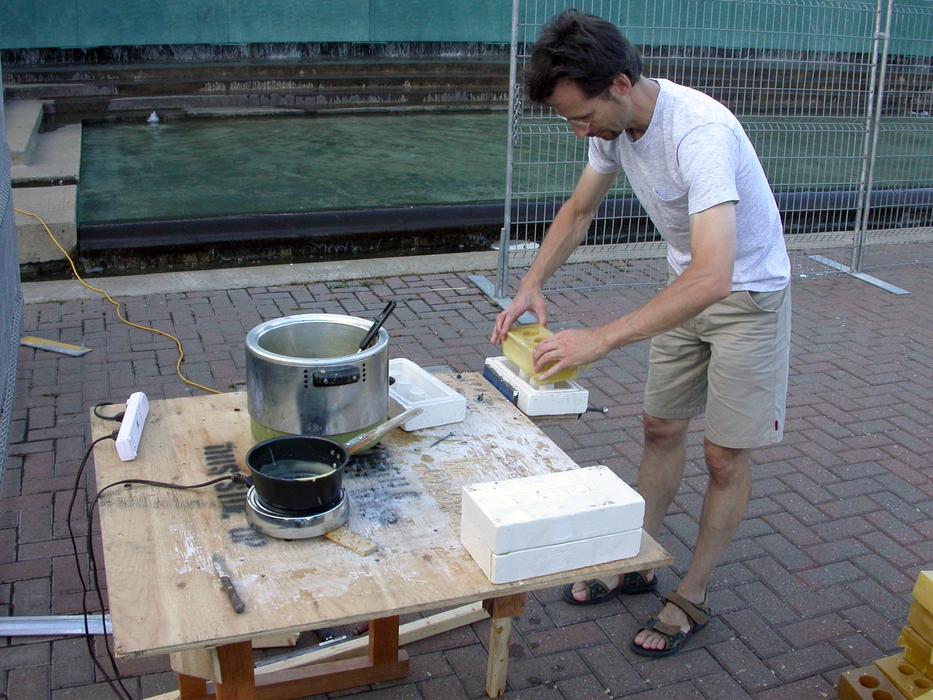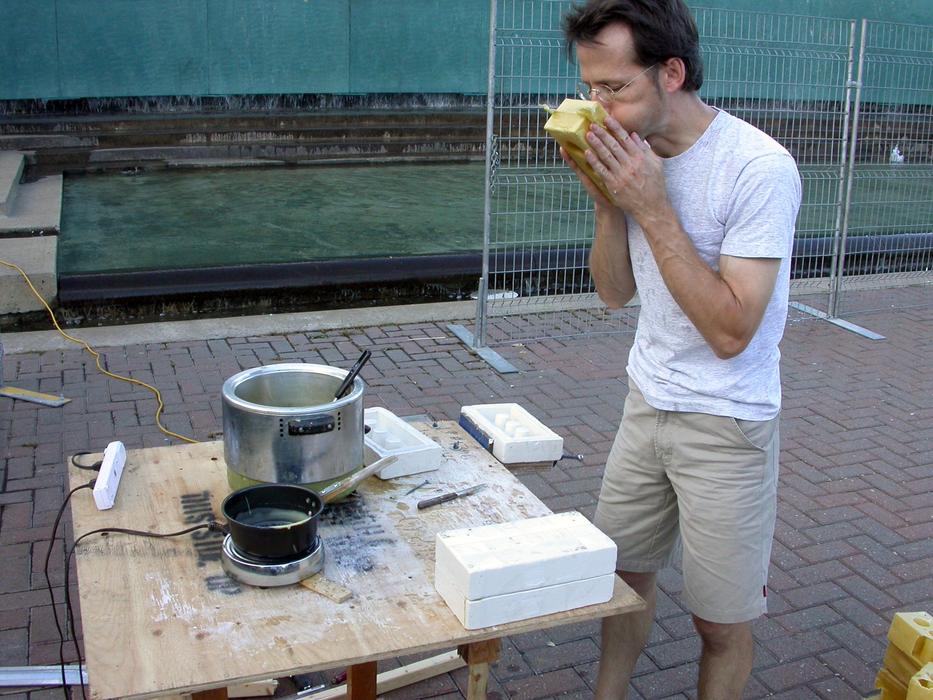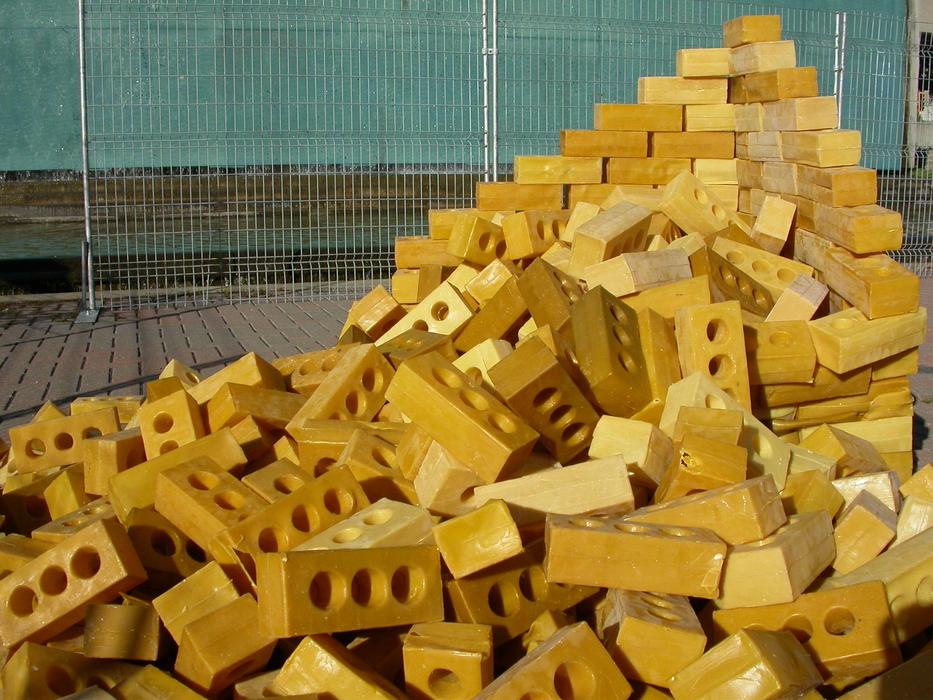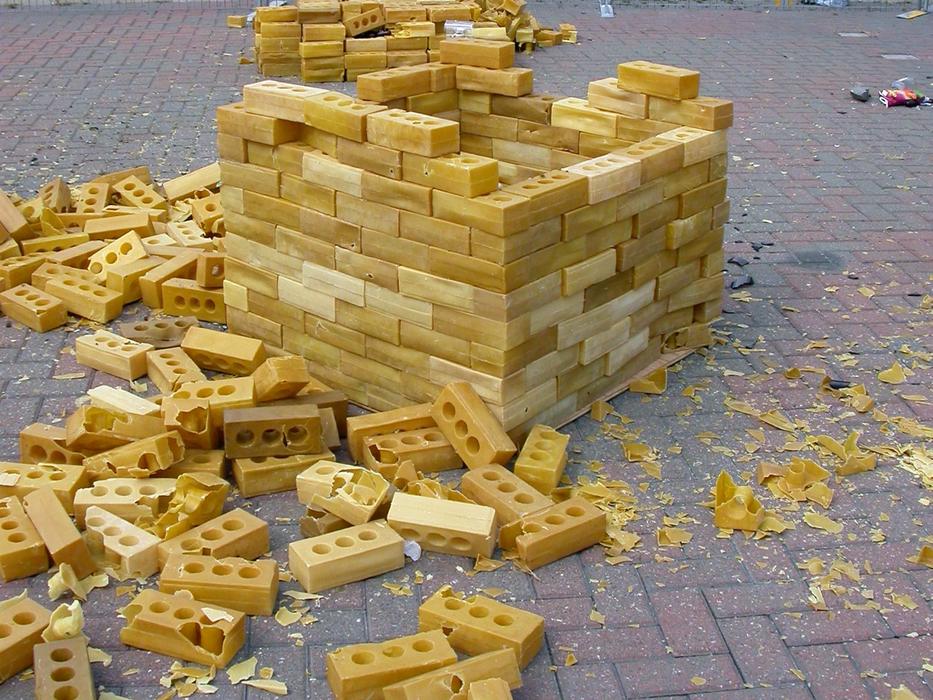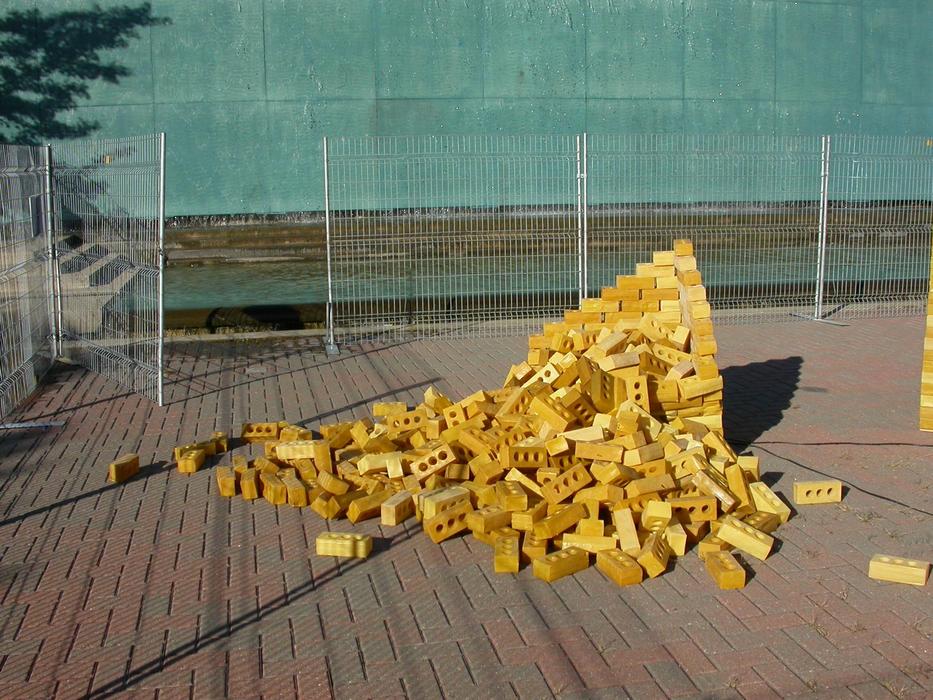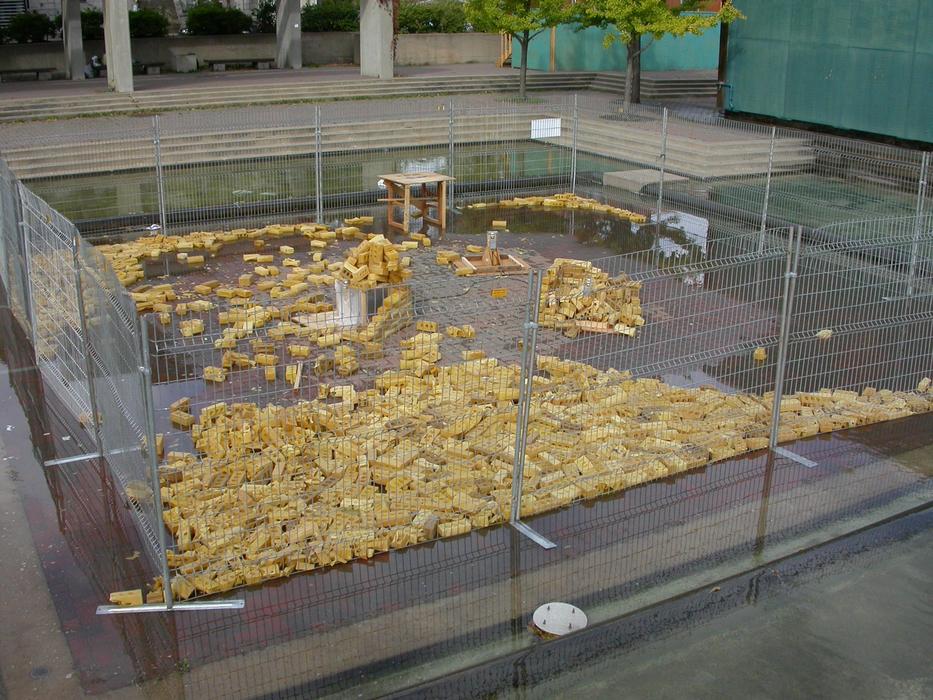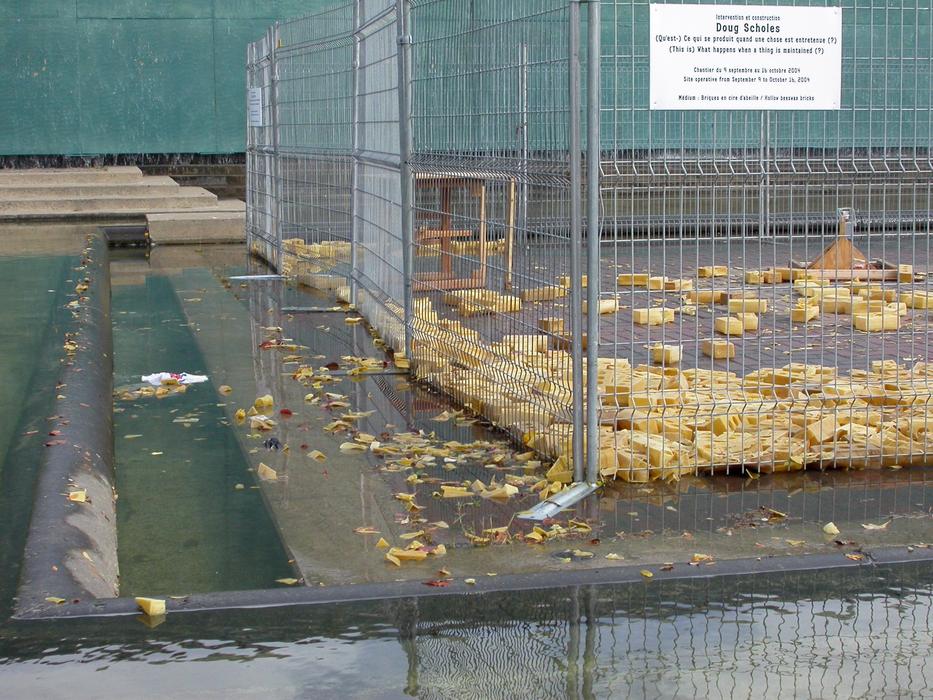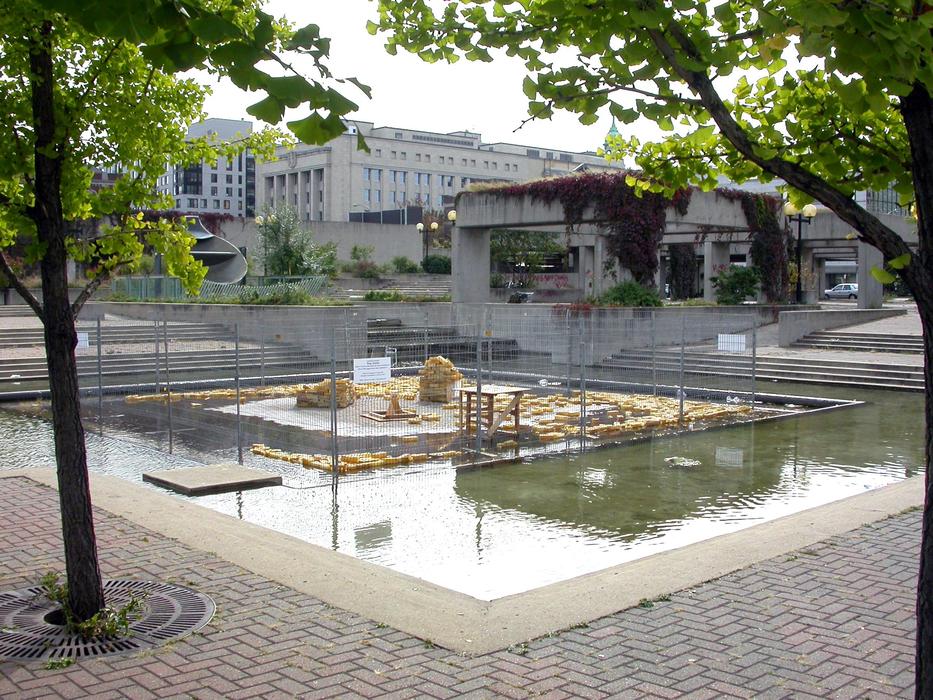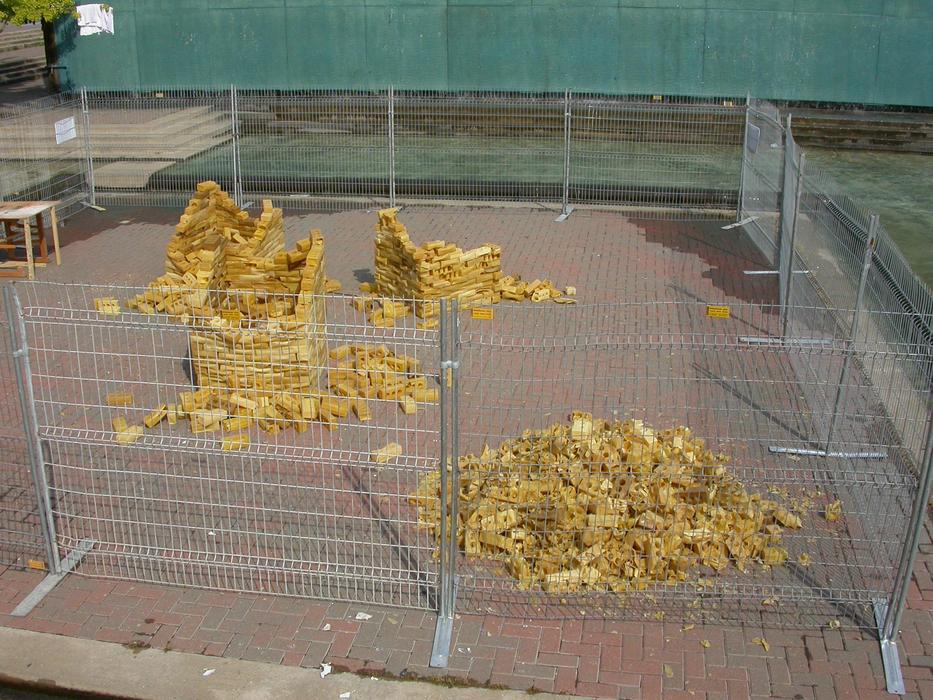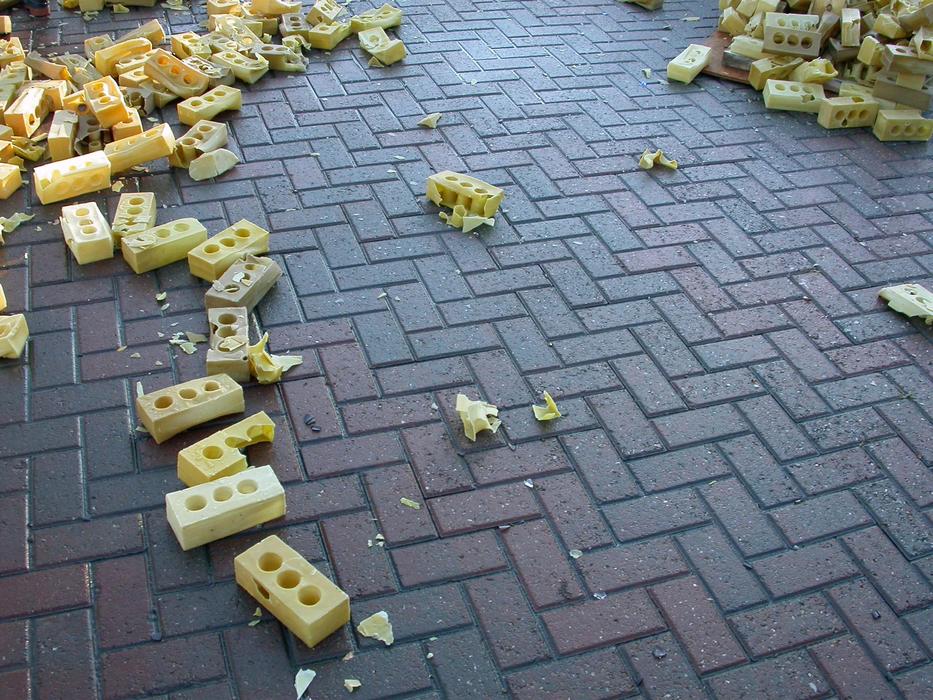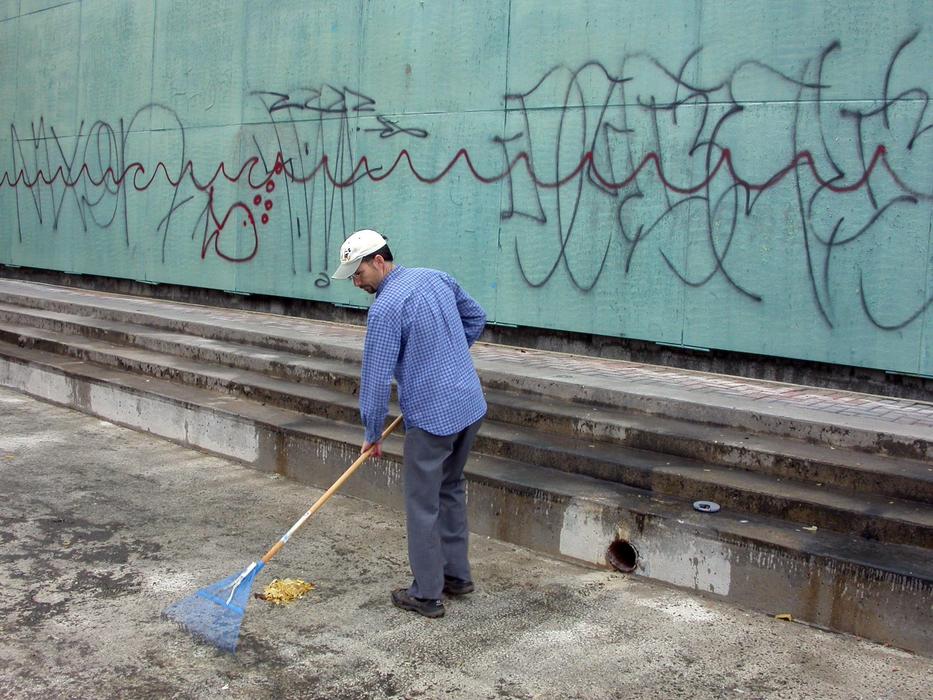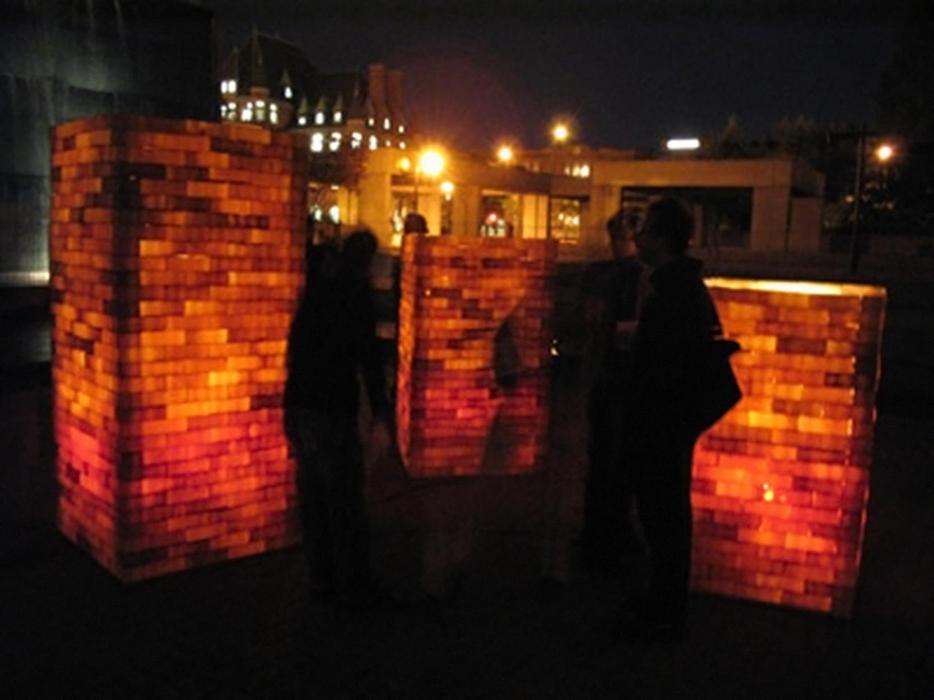Programming
Douglas Scholes
(This is) What happens when a thing is maintained (?)
Douglas Scholes will open a construction site and erect a structure. This structure is however unusual because, from the beginning of its erection, it starts to collapse.
View more
Installation and construction
The construction site was held from September 9 to October 16, 2004 at Square Viger (square west)
Doug Scholes opens a construction site and erect a structure. This structure is however unusual because, from the beginning of its erection, it starts to collapse. Perpetual efforts of construction and repair are required for a semblance of form to be maintained. During the project, these activities blurs into one. Although the structure is important, it is the work performed that becomes essential.
This project reflects the interest of the artist in the question of maintenance. The infrastructures of a city (streets, parks, bridges, sewers) are subject to a continual transformation of their state, an attrition, hence the need for the city dweller and the community to face these cyclical and perpetual activities of construction, repair, maintenance, demolition and reconstruction. These activities cause a constant ruckus, not to mention the detours and delays caused to city dwellers. Moreover, it is this continual work that makes the city usable and livable for its inhabitants. Doug Scholes' project echoes the very nature of the maintenance, who in itself becomes a celebration of its mechanisms: to see bare structures in a state of destruction/repair and to consider the performance of the work performed.
Artist statement
My artistic practice has evolved from sculpture and the creation of objects with formal aspects. With time and testing, I became interested in art and maintenance. Deterioration is an intrinsic potential for everything: wear marks sets in. An object left behind is worn out and disintegrated, while a heap of materials, left behind, will never be assembled back into an object. However, objects and materials are rarely unexploited. Transformations create a bridge between deterioration and maintenance and operate when materials wear out, when they are replaced or renovated. There are then two types of activities in progress: intrinsic (deterioration) and extrinsic (maintenance). These activities influence each other. The force of attraction, the climate and entropy take care of deterioration, while the maintenance is the result of a hard work against these forces.
These two types of activity produce pragmatic visual results related to transformations. The deterioration offers beautiful images that respond to the erosion of novelty and the assumption of an original state. The same can be said about maintenance, whether during the counting and waiting for a new coating or as a witness to the work performed.
Originally from Montreal, Douglas Scholes studied at the University of Lethbridge and the University of Quebec in Montreal, and presented his work in Alberta, Quebec and Ontario. Scholes is also a member of the Montreal Urban Research Center. www.crum.ca
Activity report
Chantier took place from September 9 to October 16, 2004 in Viger Square (West Square)
(Qu'est-) Ce qui se produit quand une chose est entretenue (?) marked the beginning of the Dis/location: DARE-DARE urban articulation project at Viger Square. The exhibition was meant to be evolutionary in nature through the material used and the constant presence of the artist Doug Scholes as a maintenance agent. He had molded nearly 1500 beeswax bricks during the summer. These hollow bricks had a rigidity that allowed them to stack easily, but also a fragility that made them react to the climate.
The sense of smell was the first faculty to be tickled by the installation. The sweet smell of beeswax attracted the public and served as a preamble to their arrival, as the scent travelled far beyond the low walls delimiting the park. The scene that greeted visitors at the corner of Berri and Viger gave them the vague impression of entering a construction site: a portable shelter, fences, three constructions (six to eight feet high) and a day laborer at work (the artist or intern Josh Schwebel, who was an almost daily presence on the site). The installation looked like an ordinary construction site. Moreover, the borough of Ville-Marie had announced the redevelopment of the park a short time before, so it looked like work had begun.
The less observant public could see the movement of the structures as the heat of the day caused the bricks to flatten, fall and spill onto the pavement. Doug Scholes' intervention seemed to present a scale model of a city moving through its various stages of evolution in rapid succession. The intervention revealed the cyclical and never-ending nature of maintenance work by making the process of erecting, repairing, renovating, cleaning and rebuilding visible and graspable. Viger Square was a place of endless maintenance.
For the users, the regulars and the inhabitants of the park, the project was understood in time, because the work of the artist took meaning in the duration and the continuity. More than a work of art appreciated at the time of a visit, the project took on the appearance of a slide show where each day presented a different version of the same work. The present was experienced as a confrontation between the day before and the day after, between the work done and the work planned, between the debris caused by weather, vandalism or flooding, and the final form envisioned for the structures.
The impact of the work on the environment was unpredictable, partly because it was the artist's first experience of dissemination outside the gallery, and partly because the work occupied the central stage in a busy park. The artist emphasizes that the human exchange was paramount during his intervention. Through the themes it addressed, the project became a link with others (passers-by, local residents, itinerants, street youth, workers, students, etc.) and confirmed the role that a work created in society can occupy, multiplying the contacts and types of possible exchange with the public.
Five weeks of intervention and constant presence on the site allowed Doug Scholes and the DARE-DARE coordinators to hear the public's reactions to the project. The comments covered everything from the joy of seeing artists exhibit their work outside of a gallery, to the surprise of seeing the beginning of the redevelopment of the square, to the shock of seeing a work of art take the form of a pile of garbage, to the revolt of knowing that the very existence of Charles Daudelin's Agora, a modern heritage, is being called into question, to the bewilderment of the lack of political will to solve the "problems" related to Viger Square.
It is in the continuity and the duration that the work of the artist was embedded and took meaning. The project was finally presented as a microcosm of urban society in the idea of maintaining a balance, or rather in the attempt to achieve it. In the context of Viger Square, Doug Scholes' intervention could be understood as an echo of Charles Daudelin's initial intention to bring artistic animation to the public square, as a cyclical and cynical response to the City's repeated attempts to cover the Ville-Marie expressway, or even as an effort to accelerate the gentrification of the neighborhood by keeping the homeless away. The artist seems to have succeeded in provoking the debate.
- Jean-Pierre Caissie, October 2004
